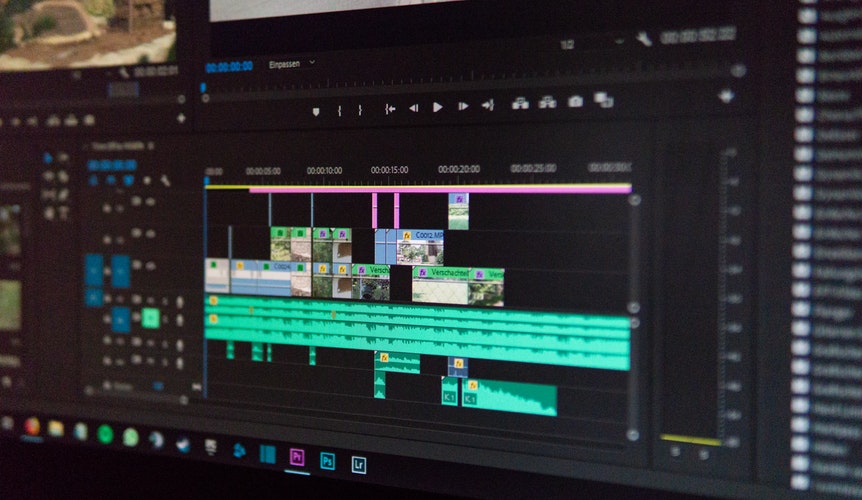It is no secret that video marketing is the future. Many companies, including Reebok and Always, have taken to video marketing to showcase their products and convey important messages.
In fact, having a presence either on YouTube or video through Facebook is almost a necessity for most modern brands.
There are lots of things to remember when recording a video for the first time. You’ll need to consider:
- Having the right equipment (e.g. a tripod or camera)
- Having an appropriate filming location
- Using professional editing software
- Sourcing music

Writing a script for a short video is, however, possibly the most important item on the list.
Why is this?
Without a script, your video has no message and no incentive behind it. Without a script, you’re unlikely to get customers from your video marketing. A script details every single aspect of your video, from the footage you want to the voiceover and sound you need to match your visuals. It’s a specific set of instructions for everyone involved in the making of your video.
We’re experts in this. Hence, we decided to create this guide about the crucial things to consider when scriptwriting for video production. Here are nine top tips on how to write a script for a short video, to boost your business’ marketing to the next level.
1. Think about what a script actually is
A script isn’t just a chat to a camera. It’s a dynamic message that should persuade someone to transition from viewer to customer.

A script doesn’t just include what the speaker or narrator is going to say, but also what everyone who features in the video does.
It is the structure for your video, the bread and butter of your entire project – so it’s really important to get it right. Entering your scriptwriting with this frame of mind, rather than considering it to be just a few words in your video, will help you create the best script possible.
2. Who is your target audience?
Identifying this is crucial to the success of your campaign. Working out who your target audience is very early on – before the script is written – will help you decide what tone to use in the video.

Here are some examples of tones you could be using in your video:
- If you’re targeting children, possibly using an animation video, you’ll want to use fun, excitable words that aren’t too complex.
- In case your video is for intellectuals or is an educational video for adults, you’ll want to use the opposite – thorough descriptive words that concisely explain what you’re doing.
- If you’re shooting for busy parents, you might want to use vocabulary that details how their lives can be made easier.
- For young professionals, you’ll want to use a tone and style that promises excitement and something new. This would also be true if you were making an events video.
- If you’re targeting potential employees in a training film, you’ll want to make sure you have a good balance of professional-sounding language, fun diction to entice the viewers, and the right words that don’t sound patronising.
Of course, it is very important that your tone and language accurately describes what you are promoting!
3. Stick to traditional structure – what, how and why
While many marketing techniques seem to favour the non-traditional, it’s important when structuring your videos to err on the side of traditional.
This is because there really is no way better to structure your script than to open with what it is you’re offering, going on to explain how you are going to offer it, and continuing to discuss why you are offering it.

Of course, there can be some leeway with this – for instance, you could add a quick sentence explaining why you are offering something in the first introduction section. But using this base as a video script example is the best way to create a complete structure for your video.
If this is all a bit overwhelming, we offer product videos as part of our package. We can take you through the workings of video and ensure that your product will succeed. We provide this service for all sorts of brands, from corporate video scriptwriting to social media films.
4. Open with a hook
Hooks are commonly used throughout narratives of all types. They’re really important to pique the reader’s interest and give them an idea about what the story is all about.
They’re vital in video as well.
Here’s why:
If you think about your script for a short video as the story of what you are offering and how you are going to give the reader this, it’s also a creative narrative.

Video also has the unfortunate tendency to attract people with a short attention span – or indeed, to give people a short attention span. AdAge reckons that videos will lose 20% of their audience within 10 seconds of playback. This is why opening with a hook is crucial.
Good hooks for video could include a quote, statistic or mind-blowing fact. You just want to make sure that you get the most important information that’s going to help the reader stick around as close to the start of the video as possible.
If you struggle with creating different content for platforms, we can help. We offer social media services, to help customers create dynamic social media videos for their brand.
5. Add a Call to Action
Just as it’s crucial to begin your video with a hook, it’s very important to end it with an attractive Call to Action. If you have a video without one, people might leave thinking “that’s interesting” but not actually do anything about it. A few hours down the line, they might even struggle to tell you what the video was about.

Not with a Call to Action. Whether you want the customer to like you on Facebook or Instagram, subscribe to your channel on YouTube, buy your product or make a pledge, be sure to include it in your video and make it clear. Don’t try to use any mysterious language – be concise about what you want.
That being said, don’t have too many Call to Actions. Just focus on the one that you consider to be the most important for your brand. Also, bear in mind that brand loyalty takes time, and people might not want to make a purchase straight away – especially if you have a higher-end product.
In this case, it might be a better idea to ask the customer to follow you on social media. They will then see your updates as you roll them out and have more of an idea of what you as a brand provide. This will increase brand loyalty and they will be more likely to not just use you for one purchase, but for multiple.

If your post is a social media video, you should definitely be looking for more likes and subscribes to your channel through video – film is one of the best ways to get a great social media following.
6. Use the right language
What is your pitch about? If you are making a charity video about humanitarian issues, you’ll want to use appropriate language for this purpose; words that invoke pathos and educate the reader. We have some great examples of charity videos we’ve created in the past.
By contrast, if you’re creating a commercial – for example, selling a hoover – you’ll want to use fast, snappy vocab that implies you can get the job done quickly.
Furthermore, if you’re scriptwriting for a corporate video, you’ll want to make sure that you use both articulated language and positive diction that entices people to your brand.
7. Clear your mind before you begin
One of the best methods for video scriptwriting is to completely clear your mind before beginning. You don’t want to have jumbled thoughts popping up into your head – you need to be focused and on-task to create the best script possible.

But how do you do this, in today’s busy society, where it seems like millions of things are going on at once? Here are some pointers:
- Set aside a time for just writing the script, and make sure that you don’t do any other work during this time.
- Put your phone away, turn off WiFi, and eliminate all other distractions.
- Take detailed notes before the actual scriptwriting to ensure that you stay on task.
- Try some meditation before you begin.
Writing can feel quite daunting, but starting with a calm and clear mind will ensure that you are ready to encompass all aspects of the message you want to convey.
8. Think about your video’s purpose
Why exactly are you creating this video? Is it a sales pitch, does it raise awareness of a global issue, or is it to help your customers get to know the faces behind the team? Many possible paths to take here.
Whatever it is, the video needs to have a clear purpose. Without it, you’ll sound a bit lost and you’ll struggle to create a meaningful, impactful script.
And you know what we said about customer attention span… if you don’t seem convinced by the purpose of the video, they won’t either, and they’ll click the red X faster than you can say video marketing.
Overall, the main purpose of your video should be to tell a compelling story. Be it a testimonial, a brand video or an explainer video, the customer journey and experience you promise should be at the heart of your script and align with your core values.
9. Read the script out loud
Once you’ve written the script – or a draft, at least – read it out loud. I know you’ll be reading it in your video, but like anything in life, it’s very important to practice.
Then be critical.
Are there any words that sound out of place – whether they be too long or have the wrong kind of tone? Is it too long or too short once you read it out? Be realistic and make sure that you have all bases covered.
Reading your script out loud will also shine a light on any superfluous information and any clunky, awkward sentences. You want your video to run as smoothly as possible, so finding the words that are slowing your message down will benefit the overall flow of your script.

If you’d prefer, you could even do a ‘test run’ of the video by recording yourself speaking it. This way, you can play it back and imagine what the official video itself will be like.
Conclusion
These tips for writing a script for a short video should help you create professional content that draws in the reader and keeps them there! With over 2000 videos, both animated and live-action, we can sort all of the logistics associated with your video, meaning no hassle or stress on your part. If you need any more assistance with your video content production, we offer a range of services; check them out here.









